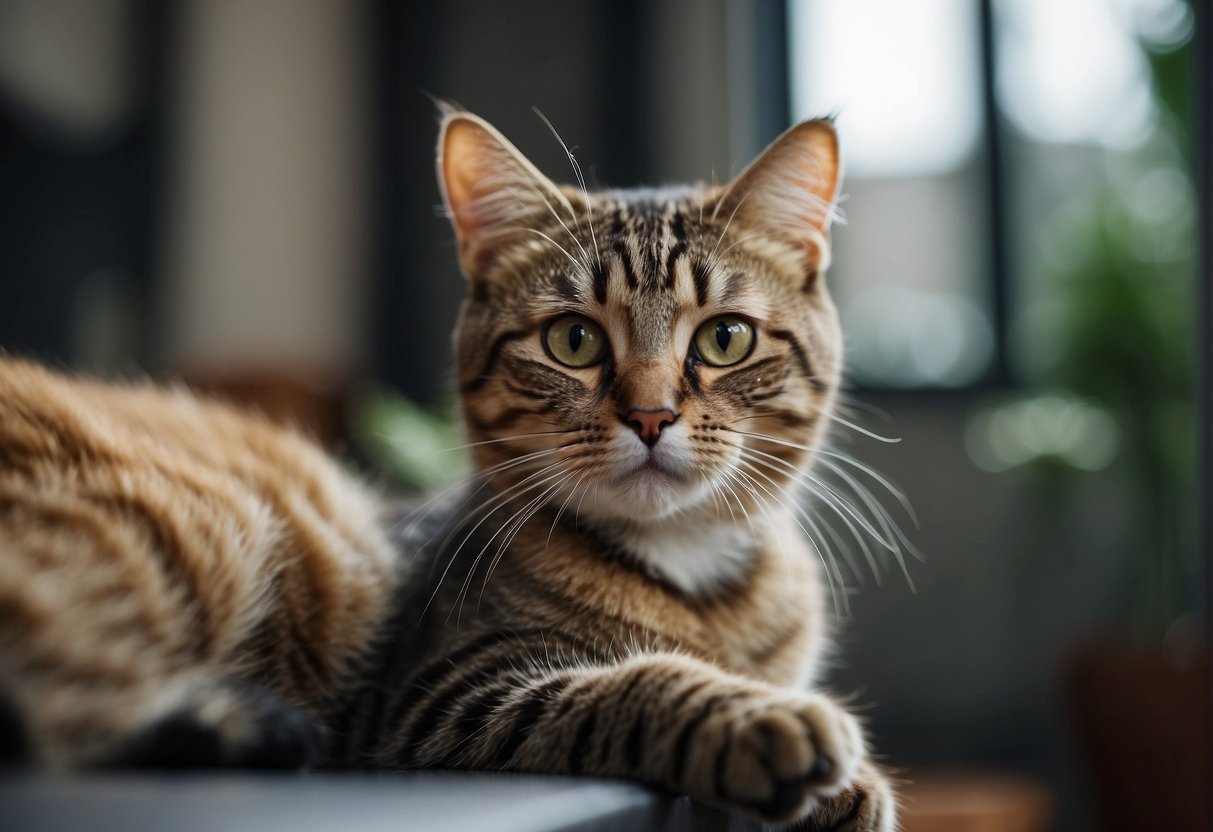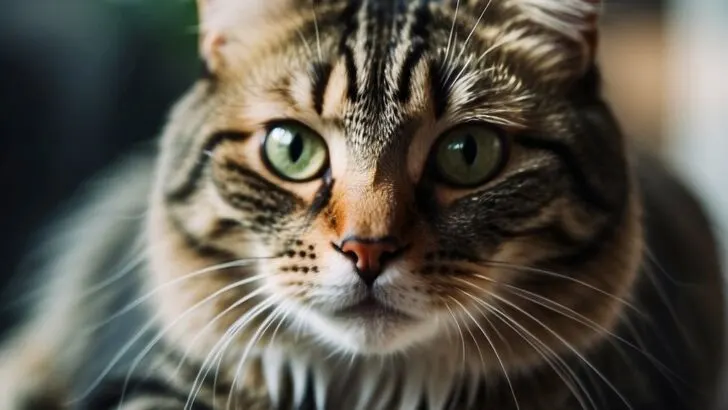Cats have a unique feature that allows them to retract their claws when not in use, much like tiny swords being sheathed away. As a cat owner, you might have noticed this when your furry friend goes from play mode to a soft, gentle touch without a scratch.
It’s pretty fascinating to observe – one moment they’re engaged in a spirited chase after a toy, claws out for better grip, and the next they’re padding across your lap, claws neatly tucked away.

The mechanism behind this action is a remarkable adaptation. Inside the paws are flexor muscles that control the retraction of the claws.
Think of it like a set of strings being pulled to move a puppet’s limbs. When a cat relaxes these muscles, the claws are pulled into a protective sheath of skin, hiding them from view and preventing them from becoming blunt through contact with the ground or other hard surfaces.
This is especially handy in maintaining their sharpness for when a cat needs to climb, hunt, or defend itself.
Claw Retraction Mechanism
Cats have a sophisticated system allowing them to retract and extend their claws. This ability is unique to felines and is central to their versatile range of behaviors, from climbing to hunting.
How Retraction Works
Your cat’s paws are marvels of biological engineering, allowing for the precise control of their claws. When your cat retracts its claws, they aren’t simply pulling them back—they’re engaging a passive process controlled by elastic ligaments.
These claws rest in a relaxed position inside a protective sheath. When the retractable mechanism is activated, the flexor muscles in the paws pull on the flexor tendons.
This action is analogous to pulling on a set of small ropes that in turn make the claws retract. It is all held together by a series of ligaments and tendons that move as smoothly as if they were well-oiled machine parts.
Control and Extension
To extend their claws, cats utilize their extensor muscles to straighten the toes and overcome the tension of the elastic ligaments, which draws the claws outward.
Just as you might use your fingertips to express yourself or manipulate objects, cats use this controlled extension to perform a variety of tasks.
From climbing trees to gripping prey or even a gentle nudge to your hand when they want attention, the ability to control the extension and retraction of their claws is fundamental to a cat’s interaction with the world around them.
Functional Roles of Retractable Claws
As a cat owner, you might have noticed how your feline friend uses its claws in daily activities. Retractable claws are a defining feature of cats, providing them with a multifunctional tool that greatly aids in their survival and everyday behaviors.
Hunting and Capturing Prey
Your cat’s ability to extend their claws is crucial during a hunt. The pointed tips give your cat the advantage of a surprise pounce and are essential for grabbing and holding onto elusive prey. When pouncing, your cat’s claws act like tiny hooks to catch and immobilize prey, making it much harder for their target to escape.
Climbing and Traction
When it’s time to climb, retractable claws are a cat’s best friend. They allow for enhanced climbing proficiency by digging into bark or other surfaces, offering increased traction. This ability isn’t just for pursuing prey or exploring — it can also be a vital route to safety if your cat needs to escape from predators or other dangers quickly.
Grooming and Self-Defense
Cats are fastidious groomers, and their claws play an important role in helping them stay clean. The sharp points can effectively remove loose fur and parasites.
Should your cat ever feel threatened, those same claws become a vital means of self-defense. With quick swipes or scratches, a cat can ward off adversaries and protect itself effectively.
These claws aren’t just for survival; they’re also tools for play and stretching, helping to keep your cat agile and entertained. Regular scratching, whether it’s on a cat tree or scratching post, is essential for cats to mark their territory, stretch their muscles, and shed the outer layer of their nails to keep them sharp.

My name is James, and welcome to FAQCats!
Along with our team of cat owners, expert pet enthusiasts, and pet professionals, we aim to write engaging helpful, engaging content about cats. At FAQCats we strive to provide content that’s accurate and fun to read. Our team writes about everything related to cats; even the most complex of topics. Through extensive research and caring for our own fur-pals, we’re able to provide something cat owners worldwide will love. Have a look around, and leave us feedback anytime!

